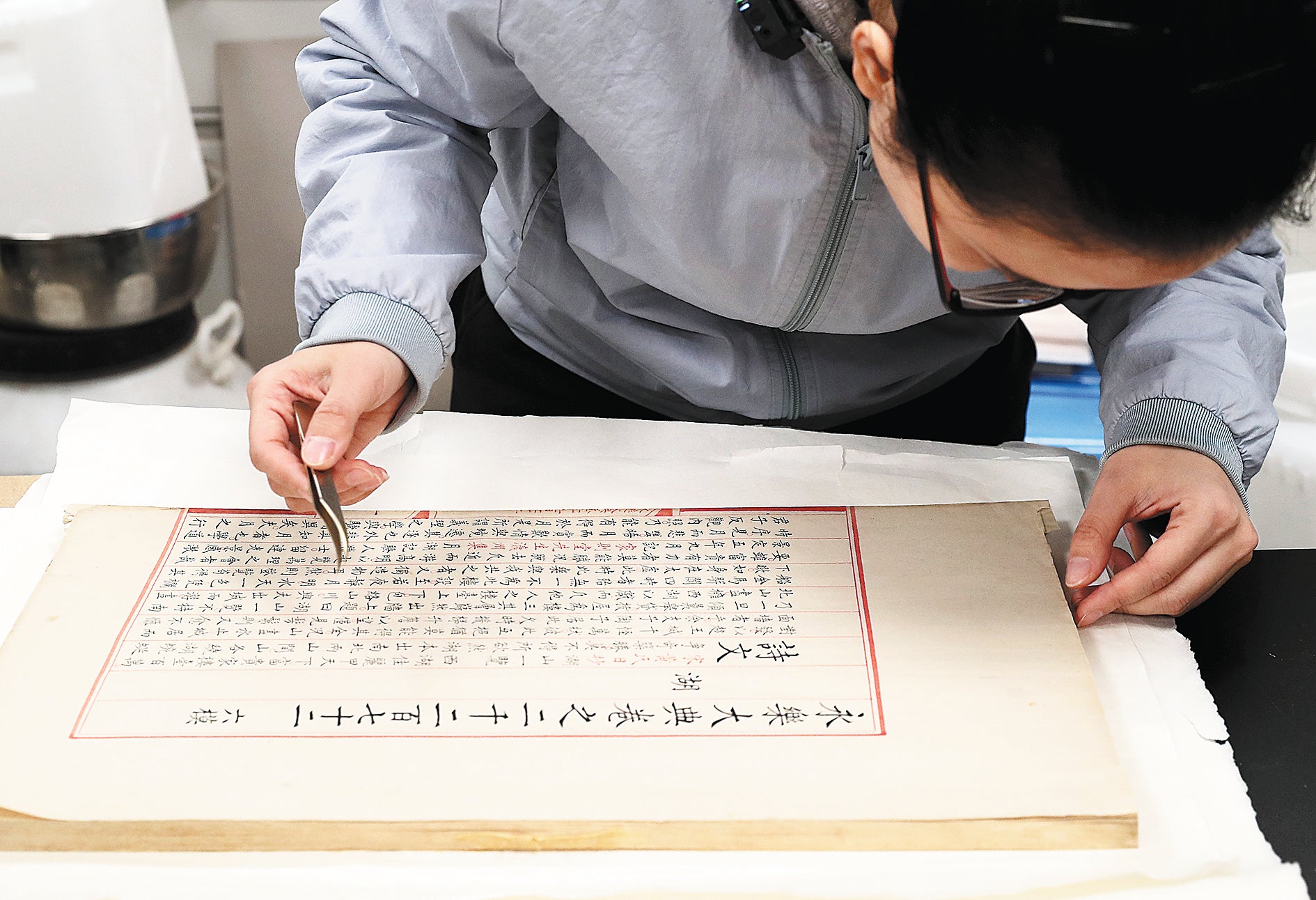Book restorers handling history
THE ARTICLES ON THESE PAGES ARE PRODUCED BY CHINA DAILY, WHICH TAKES SOLE RESPONSIBILITY FOR THE CONTENTS

Whenever Song Jing visits a museum, she makes a point of checking out the section on ancient books. In addition to appreciating the wisdom hidden in those historical volumes, she focuses on how they were bound and presented.
“It’s more like a force of habit caused by my job,” says Song, 34, who has been working in the restoration division for ancient books at the National Library of China in Beijing for eight years. This entails studying and digging into unique binding methods she hasn’t seen before, while evaluating the skills of masters who bring those paper treasures to light.
“You can tell the craftsmanship from the subtlety in the degrees of consistency in the paper’s texture and colour,” Song says.
The National Library of China is home to about three million ancient books, which in China are defined as manuscripts, books and documents predating 1911, the year the monarchy ended.
The seasons come and go outside this workshop on the first floor of the library, but time is relative for Song and her fellow restorers. Their work is calculated not through “years” but “lifetimes”. Day after day, the 10 or so specialists are fully immersed in the duty of handling and healing the old books. The flow of time may be hardly felt, except through the yellowing pages and the greying of hair.
Song made her way to the ancient books division after finishing her cultural relic protection studies at Peking University in 2015. She has been engaged in restoring more than 100 ancient cultural relics, including writings by Emperor Qianlong and Empress Dowager Cixi from the Qing Dynasty (1644-1911).
The process of repairing ancient books is complex and time-consuming. Song and the other restorers have to check in at 8:30 am every day to prepare before starting their restoration work about an hour later.
“The paste needs to be mixed right before the repair, otherwise it will go bad if it sits for too long,” she explains. “Also, the paste density varies for different tasks, which requires preparation on site.”
She adds that pastes for sticking together paper and silk are different. Moreover, the restoration tools have to be checked to ensure they are cleaned thoroughly.
“If there’s some residual paste on the brush, it can become hard and there is a risk it might pierce the paper,” Song says.
After all is ready, restoration work can go on for seven to eight hours.
The primary objective of ancient-book restoration is to extend the lifespan of the document. The higher the similarity between the original and the restoration materials, the more consistent their rate of ageing will be, and thus the better the ancient books can be preserved.
At the moment, Song and her colleagues are working on restoring a copy of Yongle Dadian, an encyclopedia completed in 1408 after being commissioned by Emperor Yongle during the Ming Dynasty (1368-1644).
It is estimated that Yongle Dadian, which comprises 22,937 volumes in 11,095 books, contains some 370 million Chinese characters. It is said to be the world’s largest paper-based encyclopedia in ancient history.
Time has taken its toll, and only about 400 books of a 16th-century duplicate, or just more than 3.5 per cent of the total publication, are known to exist, while the whereabouts of the original version is unknown.
“Most books from Yongle Dadian that have survived until today have suffered damage to their original binding,” Song says.
“To restore them to their original form, we need to gather information from various sources, such as images and texts, before we can make a conclusion as to their original binding style and repair them accordingly,” she explains.
Moreover, the ancient encyclopedia’s silk texture and colour have both grown inconsistent, which makes creating the necessary raw materials and matching the colour difficult.
“It could only be settled through trial and error, and we had to make sure the repair materials were pretreated to emulate the similar aged condition as the original,” Song explains.
Yu Xiaoou contributed to this story.
Subscribe to Independent Premium to bookmark this article
Want to bookmark your favourite articles and stories to read or reference later? Start your Independent Premium subscription today.